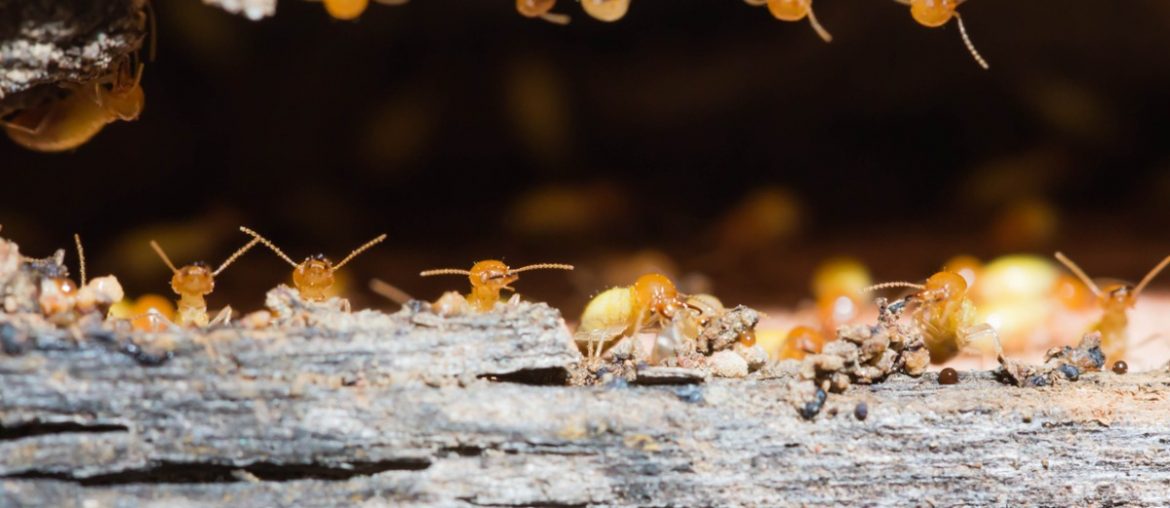Termites affect thousands of homes in the U.S. every year. As a pest control professional, it’s one of the most common issues you’ll have to deal with.
It’s essential to know about the termite treatment cost to figure out a competitive price point for your pest control company or termite control company. You also need to be aware of the different factors that can affect the cost of providing this service to offer accurate quotes to homeowners in need of termite treatment.
How Much Does it Cost to Treat Termites?

The national average cost of termite treatment can range from $200 to $900. This means that the average termite treatment cost is around $500.
However, it’s not unusual to see homeowners spend as much as $2,500 for a whole-home treatment. Plus, if the termite activity causes significant damage to the structure of the house, homeowners will typically have to spend money on repairs and termite prevention. It can also be a good idea to purchase a warranty or termite bond to lower the cost of future termite treatments.
The treatment cost for termites in a small infestation will be less. If you can address an infestation with a single treatment plan, such as termite bait or spot chemical treatment, you’ll typically charge somewhere in the $200 to $500 range.
You will probably charge homeowners between $500 and $700 to address an infestation that caused some degree of termite damage to the home. Subterranean termites that are more difficult to detect usually call for a charge of $500 to $600 to perform a thorough and regular inspection before applying a termite treatment.
You’ll have to charge $900 or more for larger infestations that might require multiple treatments. You’ll also have to charge more when dealing with large properties, which will call for using more chemicals to get rid of the termites.
It can be difficult to assess the cost of treating swarms of termites without knowing more about the specifics of the situation. A termite infestation usually starts when there is wood in contact with the ground, causing damp wood.
At first, only a few termites will enter the home. However, if there are ideal conditions for the termites to thrive, such as humidity, poor airflow, and wood to eat, the termites can spread quickly. If the severe infestation remains undetected, the termites might even start a new colony inside the home, which would result in a costly removal process.
If a homeowner doesn’t schedule termite inspections regularly, it can take anywhere from three to eight years for the signs of an infestation to become apparent. The cost of termite treatment can vary depending on when the homeowner notices the first signs of termites indicating a termite problem in their home.
Understanding the Different Factors that Affect Termite Treatment Cost

The following factors are important considerations when giving a quote for termite treatment: They’re also crucial talking points you should address when educating customers about what will influence the total termite’s cost of treatment when addressing the termite problem.
Geographic Factors
The climate is an important factor in termite infestations. Termites thrive in warm and humid climates, which is why they’re more common in California and the Southeast of the country. On the other hand, northern states like Montana, North Dakota, and Minnesota have a low risk of termite infestations.
The cost of termite treatment can be lower in the colder states because termite infestations tend to be smaller. However, pest control professionals located in states with higher risks of termite infestations can sometimes afford to offer lower prices due to lower customer acquisition costs and the fact that they can purchase chemicals in bulk to accommodate for the size of the local market.
There are other local geographic factors to consider. For instance, a home located in a wooded area might be at a higher risk for a serious infestation. The need for repeat treatment and prevention methods could cause the cost to go up.
The same thing applies to homes near bodies of water or in areas with a high risk of flood since humidity can worsen a termite infestation.
The Property Itself
Asking a few questions about the property will give you a better idea of what to expect in order to assess the total termite removal cost of the termite treatment.
The size of the property is an obvious consideration. Larger homes have the potential to become a site for a large termite colony, which could require an advanced treatment method like tenting. Plus, the damage can be harder to notice in a larger home, especially if there are multiple levels, including a basement the homeowners don’t use often.
You’ll come across different types of properties when dealing with termite infestations, including apartment buildings, single-family homes, duplexes, and commercial buildings. An infestation can easily spread through an apartment building or a duplex before anyone notices it, which can result in a higher cost.
Commercial buildings can also cost more to treat due to their size. And because no one lives in these facilities, the infestation might be more advanced by the time someone notices it.
The age of the home, the materials used, and any damages from previous infestations can also affect the cost.
You should consider whether you’ll have to take steps to prevent future infestations and potentially treat wood in contact with the ground or even replace some materials. With older buildings, you might come across untreated wood in contact with the ground, which calls for an immediate replacement to manage the risks of future infestations.
How Bad Is the Infestation?
Determining the extent of the termite problem should give you an idea of the best treatment method to use. It’s one of the most important factors in determining the cost of termite treatment.
You should engage with homeowners and ask a few questions to find out more about the infestation and the signs they’re noticing. You can use a channel like an online chat or a phone call to get more details and give a more precise estimate.
Find out whether termites are established in the home or if they are still in an early stage where they’re gradually infiltrating the home. You should also ask about potential damage to structural joints or other architectural components.
Ask about how far the infestation has spread throughout the home. In some cases, termites will remain in the basement and focus on the foundations of the home. However, they will sometimes spread and damage flooring, walls, and ceilings.
Homeowners who are dealing with advanced infestations will typically notice a few telltale warning signs that termites are present, including noises, dead wood, holes in wood, wood swelling, droppings, wood damage, warped wood, discarded wings, and signs of wood shavings.
Different Types of Termites
As a pest control expert, you can probably tell these different termite species apart at a glance. Determining the termite type you’re dealing with is another factor that can help you figure out which treatment type to use and what to charge for treatment.
Subterranean, drywood termites and dampwood termites are the three most common types of termite species you’ll encounter in the U.S.
Subterranean Termites
Subterranean termites typically live below the foundations. They might not cause extensive damage to the home itself, but they often require a thorough inspection to confirm their presence. Plus, subterranean termites can be difficult to notice, which means you might deal with a large infestation that will cost more to address.
Formosan Termites
Formosan termites are a subspecies of the subterranean type. They reproduce quickly, and a colony can easily reach millions of individuals.
Formosan termites can cause extensive infestations that cost $1,000 or more to treat. A mature colony of Formosan termites can eat through 11 lbs. of wood in a month and cause extensive and severe damage.
Drywood Termites
Drywood termite treatment should cost less. These termites tend to form smaller colonies compared to subterranean termites. These colonies include soldiers that make noise, making drywood termites easy to notice early. However, they tend to eat dry wood from the inside out, and homeowners might not notice their presence right away.
Dampwood Termites
Dampwood termites typically eat damp and decaying wood. They usually don’t spread outside the areas where they can find rotted wood. Besides replacing the damp material, you can treat dampwood termite infestations with a spot treatment, resulting in a lower cost.
Get Started With Termite Inspection Software!
The Treatment Method
Once you know more about the infestation you’re dealing with, you can determine the best termite treatment method and give the customer a more accurate estimate for your professional exterminator services.
Bait Treatment
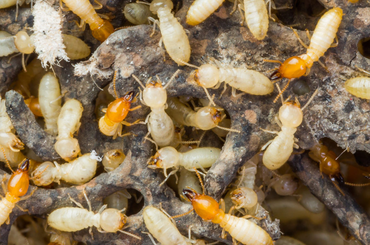
Bait treatment is one of the most affordable and common types of treatment, along with spot chemical treatments. Bait treatment introduces a food source laced with poison, typically cellulose, that contains a potent insecticide. The termites will then find the food source and bring it back to the colony.
Pest control experts charge around $10 per linear foot covered with this treatment. However, this treatment requires ongoing monitoring since you have to make sure that the termites have found the food source.
You might have to charge for additional one-time visits, quarterly visits, or simple frequent visits to check on the progression of the treatment and move the bait around if needed. Plus, it can take up to a month for the colony to consume the poisoned food source and die, which means there will probably be additional costs linked to repairing the damage caused.
Chemical Treatment
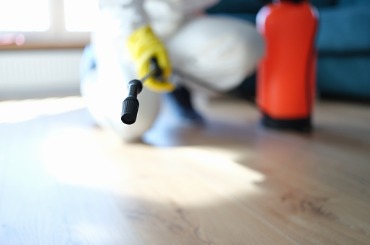
Chemical treatment is an ideal option if you can pinpoint the areas where the termites are present. It costs $5 to $15 per linear foot, depending on the type of treatment used.
With a chemical treatment, a professional termite exterminator applies a termiticide that kills pests on contact and prevents future infestations. It’s a very effective method, but it might not work well for subterranean termite infestations since these insects tend to remain deep underground.
Chemical spot treatment and liquid treatment are usually the most affordable ways of getting rid of termites, and they’re also ideal for managing homes with a high risk of repeat infestations.
Termite exterminators often offer this treatment in combination with bait treatment, which can add up to $15 to $25 per linear foot covered.
Tenting
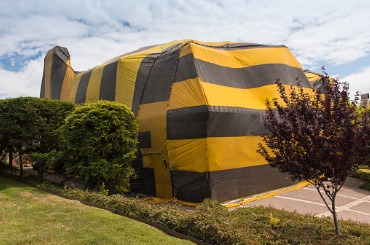
Tenting is a more advanced and expensive treatment that uses gas fumigation. It’s also the most effective way of tackling widespread termite problems.
However, tenting is an extensive treatment method that calls for educating customers and answering several questions about the products used and the overall safety of the termite treatment. Tenting will typically represent a higher investment of your time before you can convert a lead into a customer.
Tenting costs around $5 per square foot or $20 per linear foot. With this method, your team will install a tent to seal off the home before applying a toxic gas that will kill the termites. This method can target an entire colony.
However, the entire process can take three to five days. The customer will have to leave their home. It usually takes longer to educate leads about this treatment method and explain why it’s the best option in their situation.
Tenting is a good option if you can’t locate the source of a severe infestation or if you’re dealing with a large colony. This method will eradicate the termites quickly and stop them from causing additional damage.
With the national average home measuring around 2,000 square feet, tenting can cost $2,000 to $8,000, depending on the fumigation product used.
Heat Treatment
You can present heat tenting as an alternative for budget-conscious and eco-friendly customers. This method consists of sealing a home with a tent and raising the temperature.
This heat treatment takes a day to complete and is much safer for the environment. It costs less since you won’t need to use fumigation chemicals. Most pest control professionals offer heat tenting for around $3 per square foot, which translates to a total cost of $5,000 to $6,000.
Tracking Costs and Profit

You need to track costs carefully and keep an eye on different metrics to assess your profit margin for termite treatments before pricing this service. Using tech tools to track costs and revenue can make this process easier.
Customer Acquisition
Customer acquisition costs are a crucial expense you need to track for your pest control company. Whether you run ads online, send out mailers, or maintain a website, you need to assess the average cost of acquiring a new customer.
Keep track of your marketing expenses for the different channels you use. Divide this number by the total number of customers you get through each of these channels.
This metric will give you an idea of which channel generates the best ROI, and you’ll also have an accurate idea of how long it usually takes you to acquire a new customer. You can then factor this cost into what you charge for termite treatments and other pest control services.
Sourcing
Termite treatment requires specialized equipment, protective gear, and chemicals. You need a well-rounded sourcing process to purchase these items and find the best price possible.
Keeping track of how many homeowners contact you for termite treatments and looking for seasonal trends can help you save money by purchasing chemicals in bulk.
You should also assess the average lifespan of the items you can reuse, like protective gear and fumigation tents, to factor in a fraction of the total cost every time you use these items.
Labor
You should track how much time you spend on each treatment to get an idea of what labor costs. However, there are other costs linked to labor, including training since pest control requires handling dangerous chemicals.
Additional Costs
The pandemic has created a challenging environment for service professionals. Many businesses are seeing some costs increase and even running into new costs, such as purchasing PPE.
It’s important to keep an eye on these new costs and adjust treatment pricing accordingly. With inflation, you might want to track what you spend on gas with more accuracy and consider charging a little more for customers who live further away from your facility to account for travel costs.
Guarantees and Additional Treatments

Offering a money-back guarantee in case a customer isn’t happy with the outcome of the treatment is a great way of setting your pest control business apart.
Many pest control professionals also offer warranties that cover additional treatments at no cost in case the termites come back.
These warranties add value for the customers and can be powerful arguments when prospects are hesitant about choosing between two or more pest control businesses. Besides, a customer will feel that they’re not taking any risks by choosing your pest control service if you offer a comprehensive warranty.
However, fulfilling a warranty can be costly. If you offer a guarantee, keep track of how many customers use this service, assess the overall cost, and think about spreading the average cost of fulfilling warranties across all the sales you make.
Additional Services
Homeowners who deal with termite problems will likely need additional services. It’s important to have an accurate idea of what pest control professionals typically charge for these services.
Termite Inspections
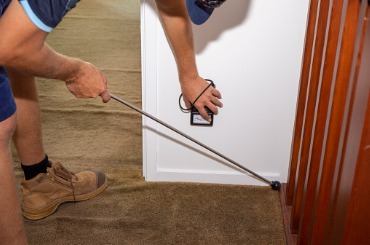
A termite inspection can cost anywhere from $75 to $300. Most termite control experts will charge $75 to $150 for a regular inspection.
If the homeowner needs a letter or report, you would charge more for this service since compiling the inspection report can take time. In most cases, an inspection with a detailed report costs $100 to $200. You can charge up to $300 for large properties or commercial buildings since the inspection will take longer.
There is a market for termite inspections due to homeowners putting their homes on the market. Buyers also often pay for termite inspections before closing on a home.
You should think about offering a free inspection when homeowners reach out to you because they think there might be termites in their homes. You won’t have to provide the homeowner with a letter or report in this scenario, and the inspection will often lead to an opportunity to sell a termite treatment. You can also provide the homeowner with a free quote as part of the inspection process.
Inspections can also be a great source of revenue for homeowners who have dealt with infestations in the past or who live in areas with a high risk of infestation. You should consider reaching out to these homeowners and offering discounted inspections if they subscribe to a package that includes an annual termite inspection.
Damage Repair
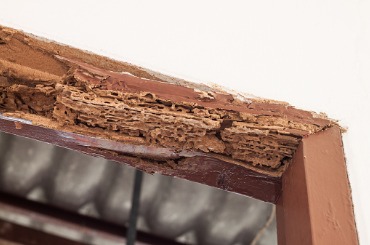
Fixing the damage caused by termites is important for more than one reason. It can prevent further pest infestations and protect the home and its foundation from further structural damage.
The cost of fixing the damages can vary a lot. In the case of a small infestation, treating a section of wood with borate is a cost-effective way of protecting it from future infestations. However, in more severe cases, the homeowner will have to replace large sections of damaged wood.
Damage repair costs around $100 per foot on average, but the total cost can quickly add up to $3,000 or more. Homeowners should count on spending at least $1,000 to $1,500 to purchase new materials.
Termite Prevention
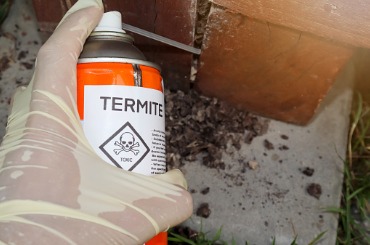
Termite prevention is a great add-on you can offer to homeowners who want to take steps to prevent future infestations. This preventative measure consists of applying a chemical around a home as a barrier treatment method that will keep termites out.
The cost of a barrier treatment can range from $10 to $15 per linear foot. On average, this treatment costs around $550, but the total cost can vary between $200 and $900, depending on the size of the home.
Termite Bond
A termite bond is a service agreement you can offer to help homeowners protect themselves against pest problems. Termite bonds are somewhat similar to insurance policies. Homeowners can purchase a bond to get services that include annual inspections, termite prevention, and treatments if needed.
A home warranty with an annual inspection and termite treatments typically costs $300 to $400. However, termite bonds that cover a more comprehensive range of services or that last for several years can cost as much as $1,000.
You should determine what you want to include in your bonds, what kind of bond duration you want to offer, and how likely you are to provide termite treatment services to price your bonds accordingly.
Bonds can be a great source of revenue, but it’s important to assess how much it will cost you to deliver the services the bond covers. You should also use data to get an idea of how likely homeowners are to need these services.
Saving Time With Termite Inspection Software
Termite inspection software can greatly streamline your termite treatment business, saving you time and improving efficiency. With the right software, you can easily schedule inspections, track customer information, generate reports, and even create quotes for treatments.
By using termite inspection software, you can eliminate the need for manual paperwork and streamline your processes. This not only saves time but also reduces the risk of errors in your documentation.
Benefits of PestPac’s Termite Inspection Software
PestPac’s termite inspection software offers numerous benefits for pest control companies looking to streamline their operations and improve efficiency in providing termite inspection services. Here are some key advantages to using PestPac’s software:
1. Streamlined Scheduling: With PestPac, you can easily schedule termite inspections and other services, ensuring that your technicians are always on time and maximizing their productivity.
2. Mobile Access: PestPac’s mobile app allows technicians to access and update inspection reports in real-time, reducing the risk of errors and improving communication with homeowners.
3. Customizable Reports: PestPac’s software allows you to create customized reports for each termite inspection, including photos and detailed notes, providing transparency and professionalism in your services.
4. Integrated Billing: PestPac’s software seamlessly integrates with billing systems, allowing you to easily generate invoices for termite inspection services and track payments.
5. Enhanced Customer Service: By using PestPac’s software, you can provide homeowners with timely updates on their termite inspections and treatments, improving customer satisfaction and loyalty.
Offering termite prevention services can be a lucrative addition to your business, providing a steady stream of revenue and building long-term relationships with customers. By investing in termite inspection software like PestPac, you can improve operational efficiency, save time, and provide exceptional service to homeowners.
Get Started With Termite Inspection Software!
Termite Inspection FAQs
How Long Does a Termite Treatment Usually Last?
Fumigation and chemical spot treatments are usually good for at least five years. You should reach out to homeowners who have received these services and offer inspections and termite prevention services to help prevent future infestations.
Is a DIY Termite Treatment a Good Idea?
Homeowners can save a lot by purchasing an insecticide and attempting to tackle a termite infestation by themselves. However, it’s not possible to get the same results as what professionals can deliver.
As a pest control expert, you need to educate homeowners in your area about how professionals do things differently, including using commercial-grade insecticides.
What Can Homeowners Expect to Pay for Termite Treatment?
A termite treatment can cost anywhere from $200 to $2,000. The total cost depends on if it is a severe infestation, the type and size of the home, and the treatment method used among other factors. The best way to get a more accurate quote is to contact a pest control expert and give them more details about the situation.
Is a Termite Bond or Warranty Worth It?
A termite bond or warranty can help homeowners save money, but it’s important to consider the duration of the bond and the services included.
With the cost of termite treatment being as much as $1,000 to $2,000, purchasing a termite bond for $300 to $400 can help homeowners save a lot, especially for older homes where damages could be extensive.
What Is the Most Effective Termite Treatment Method?
Whole-house fumigation remains the best way to eradicate an entire colony. It’s an advanced treatment method that uses toxic chemicals and requires people and animals to leave their homes for a few days.
However, not every infestation calls for fumigation of the entire house. A pest control expert can get rid of termites with chemical spot treatments or bait stations if the infestation isn’t widespread.
Who Needs a Termite Inspection?
Homeowners who are thinking about selling should consider a termite inspection. It’s also an important step when purchasing a home.
It can also be a good idea to schedule an annual inspection if you’ve dealt with pest problems in the past or if you have an older home with wood in contact with the ground.
Can You Sell a House With Termites?
Selling a house with termites can be challenging, as potential buyers may be hesitant to invest in a property with an existing termite infestation. Even though it is possible to sell a house with termites, it’s important to address the issue before listing the home on the market to avoid any complications during the selling process.
Conclusion
Pricing treatments can be a complex process since there are many different factors to consider. The average cost of termite treatment is around $500, but homeowners often have to spend money on repairs, prevention methods, and annual inspections.
As a pest control professional, you need to establish a clear process for tracking your different expenses and assessing the different factors that will determine how much a termite treatment will cost you so you can offer a competitive quote that also allows you to meet your goals in terms of revenues.

